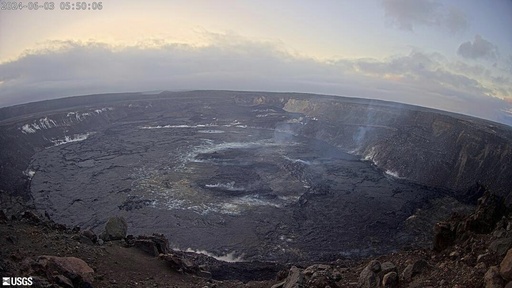HONOLULU (AP) — Kilauea, one of the most active volcanoes in the world, began erupting early Monday in a remote area and then paused about 12 hours later, the U.S. Geological Survey’s Hawaiian Volcano Observatory said.
The eruption was about 1 mile (1.6 kilometers) south of the Kilauea caldera, in an area within Hawaii Volcanoes National Park that last erupted in December 1974. The area surrounding the caldera has been closed to the public since 2008 because of other hazards, including ground cracking, instability in the crater wall and rockfalls.
“Glow is visible in webcam imagery, indicating that lava is currently erupting from fissures,” the USGS observatory said. The eruption in 1974 only lasted about six hours.
Later Monday, the observatory said lava flows were sluggish between 11 a.m. and noon and had ceased moving by about 12:30 p.m.
“However, activity in this region remains dynamic and could change quickly,” the observatory said in an update. Partly because of elevated volcanic gas emissions continuing, it’s possible the eruption could resume. Scientists will continue to monitor the volcano.
The eruption took place in a remote location within the national park and didn’t pose an immediate threat to people or critical infrastructure, the observatory said.
Big Island Mayor Mitch Roth said residents are accustomed to eruptions happening within the park.
“People just need to realize this is in one of the safest places it could have happened,” he said. “Absolutely no property in danger.”
Typically the primary hazard during Kilauea eruptions is volcanic gas, which reacts with the atmosphere to create volcanic smog, or “vog.” The vog can present health hazards for residents and visitors, damage plants and affect livestock, the observatory said.
Roth said the communities of Oceanview and Naalehu may experience some air quality issues.
The observatory logged roughly 250 earthquakes beneath the Kilauea summit in the hours before the eruption began. The observatory said it would issue updates on the eruption daily, as well as whenever there are significant changes in volcanic activity.
Earthquake activity decreased greatly in the summit region with the onset of the eruption, the observatory said.
___
This version of the story deletes reference to Kilauea’s size. Kilauea is not Hawaii’s second-largest volcano.
This website uses cookies so that we can provide you with the best user experience possible. Cookie information is stored in your browser and performs functions such as recognising you when you return to our website and helping our team to understand which sections of the website you find most interesting and useful.
